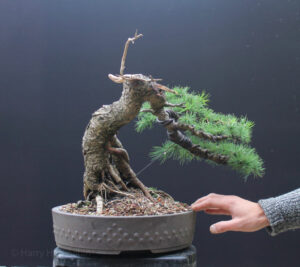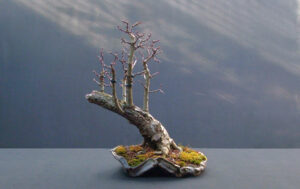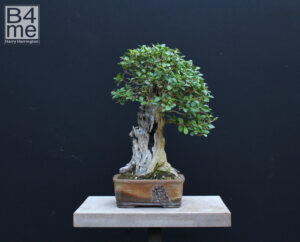This Beech ‘sapling’ was collected from local woods in the Winter of 2001. It was just one of a number that I collected that Winter with the purpose of developing them into bonsai.
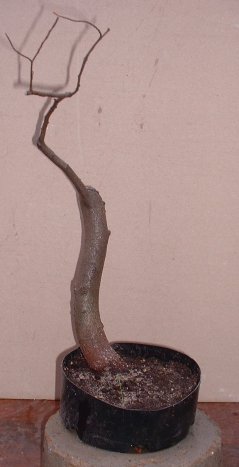
The tree was approximately a metre in height at the time of collection and so, as is common practise when developing trunks for bonsai, I chopped the trunk down to the first branch to create a new trunkline. In other words, I pruned back the main trunk so that the thinner first branch would become the new upper trunk.
One of the main purposes of chopping in this manner is that as the first branch is thinner than the base of the trunk, the new trunkline would have greater taper; a highly desirable quality in bonsai. (For more details on developing trunks for bonsai, please visit here)
At this point in time, I intended to develop the tree as quite a small bonsai; (approximately 12″/30cm) and planted the newly collected tree into a small cut-down nursery pot as can be seen above.
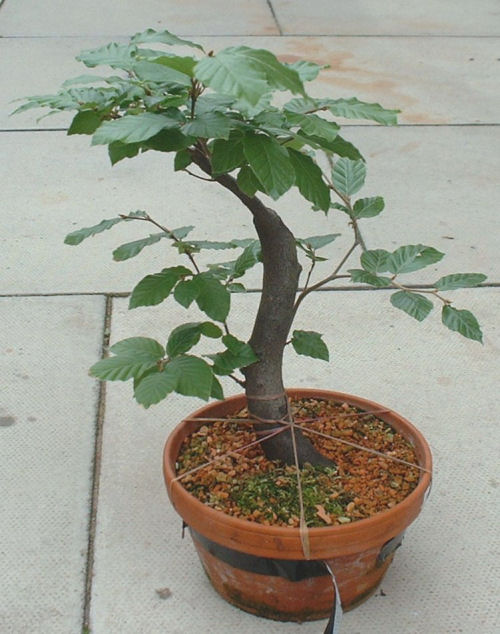
2003: Two years later and the Beech had developed very slowly. The transition between the original trunk and new trunkline had become smoother and new branches had appeared, but this development was slow and I decided to plant the tree into the ground where its growth would be far quicker and therefore development into a bonsai could be sped up (see Field Growing For Bonsai).
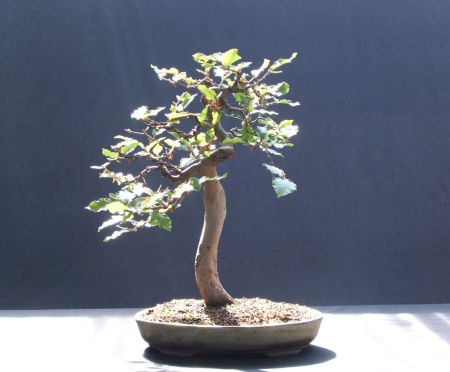
June 2007: For four years while the tree was in the ground, it was allowed to grow wild and would then be pruned back hard to selected branches during the Winter. As would be expected, trunk and branch development was considerably faster.
During the Spring of 2007, I dug the tree back out of the ground, planted it into a bonsai pot and styled it for the first time. I was pleased with the result as the bonsai had a wild and natural form rather than a contrived pine image.
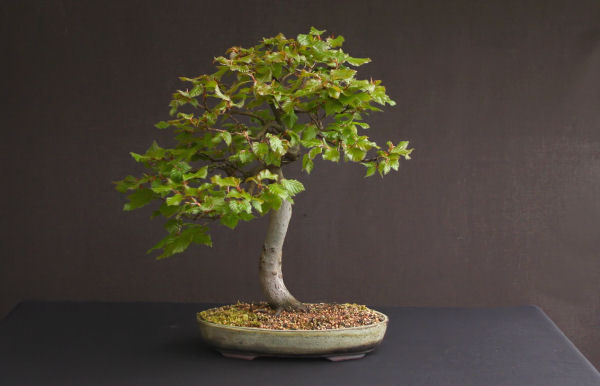
May 2009: After two further years of development, the ramification of the branches had been greatly increased by leaf-cutting in early Summer (see advanced beech pruning techniques described here)
Final Height 17″/42cm
.jpg)
.jpg)
These two views show the Beech bonsai from first the left and then the right hand sides.
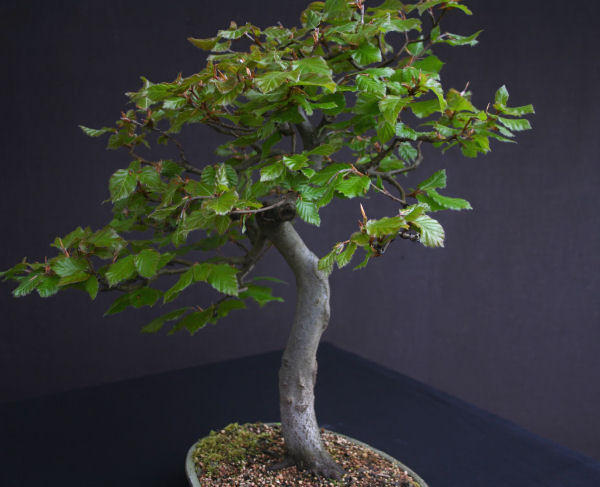
This image from the front/right view reveals something interesting about trunk and taper development in bonsai that is often misunderstood by enthusiasts new to field-growing and trunk-building.
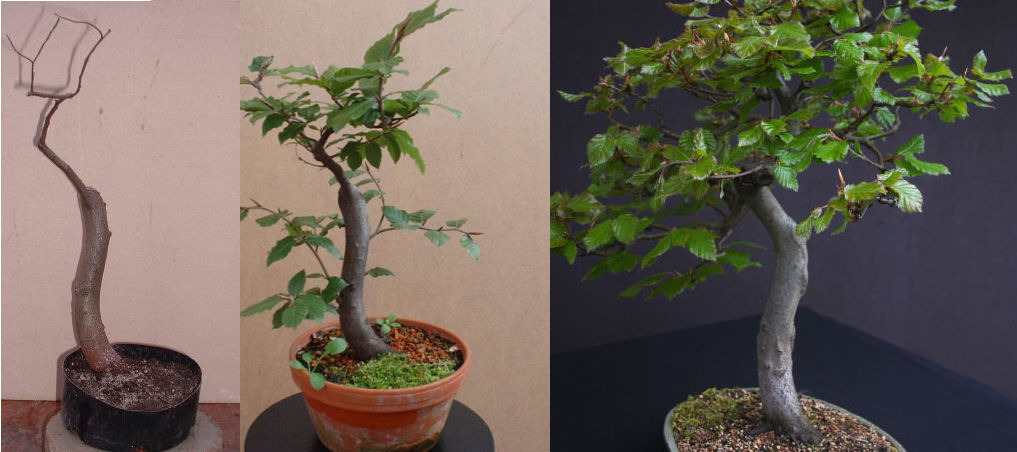
This image composite shows the bonsai from the same angle at three different stages; in 2001 after collection, in 2003 after two years growing in a pot and finally in 2009 after 4 years field-growing and a further 2 years cultivation in a bonsai pot.
Over 8 years, the new leader (that the trunk was chopped to in 2001) has thickened, taper has been created and there is now a smooth transition from the original trunk through to the original branch.
However, despite the new trunkline increasing in diameter by 3 or 4 times its original size, the original trunk has not thickened at all. The diameter of the new trunkline has simply ‘caught up’ in size with the original trunk.
Very often I have seen enthusiasts fail to understand that when developing a trunk for bonsai in the ground, the tree must first be grown freely until the base is the desired thickness intended for the bonsai that it will one day become. The example above perfectly illustrates that after trunk-chopping, the trunk base will barely thicken (if at all) until the new sections above it have reached the same diameter. By which point the taper (and the purpose of trunk chopping) has been lost

